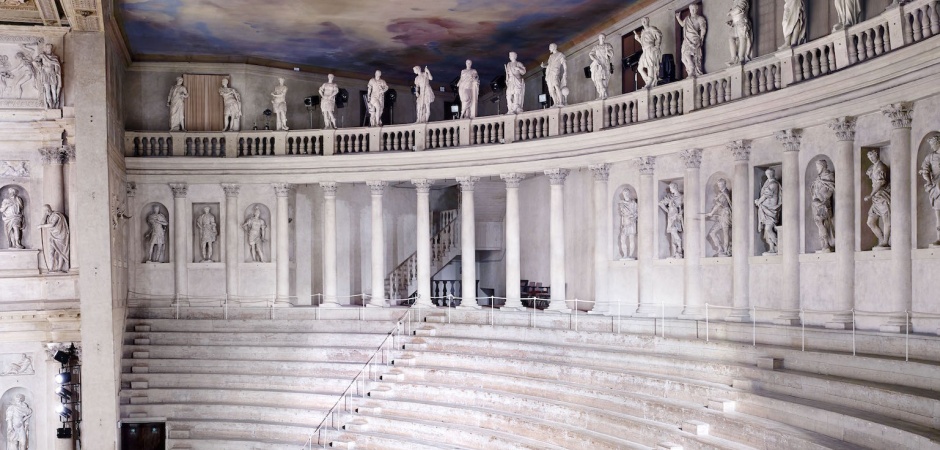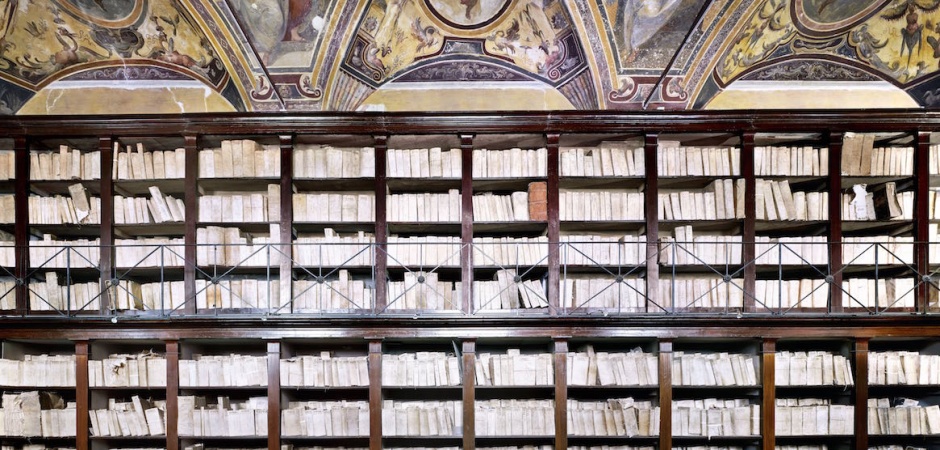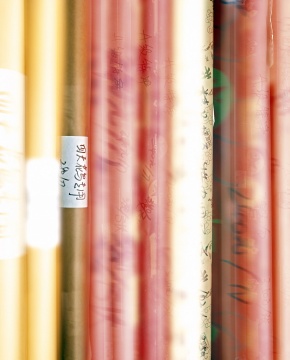The Long & Short of It
I am not a curator by profession. Thus to write is for me an especially arduous task. This certainly won’t be an essay one would typically encounter in the context of curating. Please forgive me in advance.
Candida Höfer is among the most highly esteemed of photographers and her photographs have for a long time now been seen as classics of photographic history. It is unnecessary therefore to expatiate at length on her successes. I strongly recommend here Mr. Herbert’s On Methods - an essay he produced whilst participating in the curation of Candida Höfer’s exhibition of the same title at Beijing’s Three Shadows Art Centre. The essay introduces in consistently rigorous detail every aspect of Candida Höfer’s work and is truly a masterfully astute and well researched document. The artist’s monographs also will be made available for all visitors to peruse in the present exhibition’s specially conceived reference library.
In my view, it is very hard not to be sentimental when discussing Candida Höfer. She is a good friend of mine, my senior as an artist, a mentor and my kin. I would like to share with you therefore a few insights I have gleaned during times I’ve spent with this friend.
First Meetings
I still remember the circumstances of Candida Höfer and my first meeting. Those few days had been consistently suspended amid light rains, sprinkling the undergrowth to sublime in a film of mist, leaving the spaces around buildings swathed in fog. Even if this was but a backdrop - a foil - the image it outlines remains one of utmost clarity. Her gold-auburn air, decked in black robes and carrying an opalescent green umbrella, she paced quietly through the trees, quite easeful in her refinement.
Our English was still rather atrocious at that time and all of us still depended totally upon Inna for simultaneous translation. It was also the first time any of us had ever met a true master. This made it very difficult not to be anything but timorous when the time came for dinner. Later on however, the time we spent sat together talking in the study still has an influence on me. Candida Höfer flung open the monograph she had brought with her and said, “Why don’t I tell you about what it is I do.” Subsequently - beginning with the first image - she spoke of her shooting process and technique, every detail of her creative process and so forth. “Photography also has an order.” — She spoke with a vivaciousness alike to that of any artist from my own generation. Following this, all of us had many questions - How is it you go about getting permission to take the photographs, which special cameras do you use, how come your photographs all lack human presence and so on. When I think back now, our questions were all shamelessly naive. Nonetheless, Candida Höfer responded to them all with utmost patience, with Herbert there also to offer assiduous, supplementary exegesis when needed. Unlike my colleague Fang Wei - possessed as he is of a rich knowledge of contemporary art history - this was the first time I had ever laid eyes on Candida Höfer’s work. I asked several times how why artist behind these images would so serenely stifle their sentiments. Candida - identifying my exasperation - simply smiled and said, you must be a painter.
Sculpting Time
My committing to text the circumstances of our first meeting isn’t a mere nostalgic reflection on their loveliness, but rather highlights how this moment was so important for me, one might even go as far as to say how it will continue to influence me for the rest of my days. For a young person facing the world for the first time, to witness something so critical is all the more important.
Candida Höfer’s arrival allowed me to rethink the way I understood “Art”, to become as I ought to as an artist in my mind and to understand an artist’s duty. Through the subtle workings of that which underpinned all of our subsequent meetings, gradually I acquired new standards for judgement and selection, the road I ought to follow beginning gradually to unfurl itself, more pragmatically, neither too fast nor too slow.
Same Different
If one notes how perfect it is to meet in the right place at the right time in this way, what comes thereafter manifests only by way of the respective aspirations of those concerned.
In the summer of 2012, the Inna Art Space coordinated Candida Höfer’s inaugural exhibition on the Chinese mainland, Same Different, Different Same. At that time, the space had still been located by the side of Hangzhou’s West Lake, an albeit small nonetheless phenomenally active art space. In order to accommodate the limited dimensions of the space, Candida reduced the classic proportions of her works — These were versions of the works unique in their being without existing precedents. Exhibited alongside these were also works of a more “Asian intent”, including smaller works shot in Beijing during the 1990s.
Many were eager to know why the artist chose to stage an exhibition at such a small, pedestrian space, and moreover, why she would continue year after year to participate in Inna’s group exhibitions, not only exhibiting new works, but also assiduously submitting to written interviews. Friendly confidences aside, I believe Candida is in fact very fond of Hangzhou, the city’s young artists and charged creative atmosphere having left her with profound impressions, along with the influence of this steadily maturing artistic structure itself. It was via these means that she intended to offer her participation and patronage.
Classics
Whether it be in the art museum, a gallery, exhibition or amid the confusion of an art fair, I am always drawn to and brought to pause before Candida’s work.
Whenever one stands before one of Candida Höfer’s large scale works and is confined within their unpopulated architectures, one cannot but admire the direct economy of the artist’s gaze, lost in the complexity of details, intoxicated by the elegant mystique of their lighting, imagining the pursuits of humans occupying space… …What one draws from their serenity seems to transcend space and time, possessing rather a more radical form of beauty.
Portrait of the Artist
I want to draw attention here to the fact that the present exhibition includes two projected works, and how in one of them - Echoes, being composed solely of shots of windows - because of the reflections upon the glass, one sees what lies opposite this, a secret glimpse of the artist’s figure, camera in hand.
As it happens, in life, Candida always carries a small, handheld camera. As one walks in her company, from time to time she’ll be drawn to something or other, at which point she halts to focus on the shot. Her friends thus automatically reduce their own pace, waiting quietly for as the artist does her work.
In the present exhibition, the viewer will see for themselves more than thirty small scale works the artist shot using a digital camera, works produced between the years 2014 and ’15. A portion of these works were made in China when the artist was with friends. When I look at this series of more quotidian works, still I’m inspired. Albeit at that time I was stood beside the artist herself, I felt however a sense of being at the same time both familiar and strange.
My Perspective
Attending the installation of Candida’s Munich solo exhibition in the Spring of this year, everyone was waiting for the artist to make the final adjustments. The works had still yet to be hung and I was transfixed by one of the works and gazed at it quite aimlessly. Suddenly, I discovered that there are many ways to view Candida’s works, similar in a way to the scattered perspective of traditional Chinese painting. I even imagined I could position myself within them, resulting in an entirely different image where the architectural details all transformed into abstract components. However, I am at an odds as to quite how to explain why I find myself floating like this, always as if in midair. My friend once told me it’s because a tripod was used to support the camera. When I asked Candida, her brow wrinkled in a smile and she asked me to put my experience into words.
Candida Höfer
Face to face with one of Candida’s works, one forgets the conventions employed in assessing photographic works. One doesn’t think at all and simply quietly contemplates, experiencing in the work a far purer kind of beauty. I that hope that in seeing the works that make up the present exhibition the viewer might find there a sense of a person who is easeful in her elegance, boundlessly curious about the world, loves life, cares for those near her and who uses her camera to take stock of the world, condensing this love in eternal moments.
For the first time in four years , Candida Höfer comes to Hangzhou to stage a second solo exhibition in the Inna Art Spaces's new premises. Great thanks go out to all members of the Inna team for their unwavering support. Thanks are due also to Candida for her belief in us all.
fold



